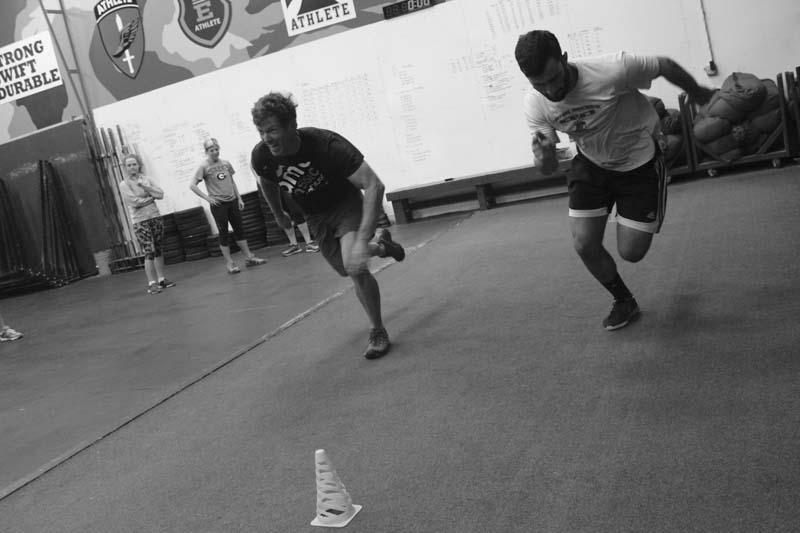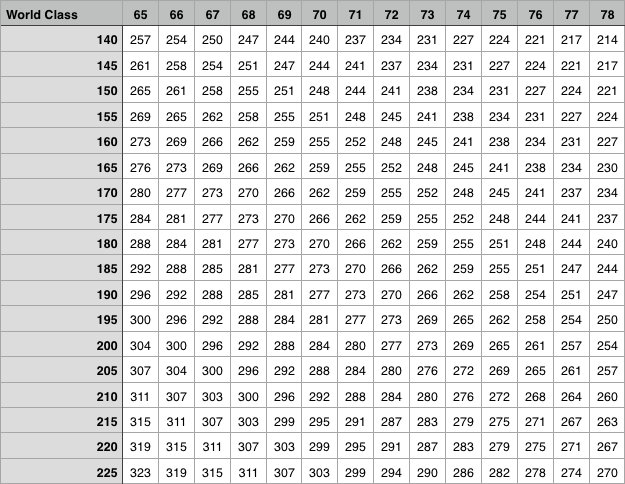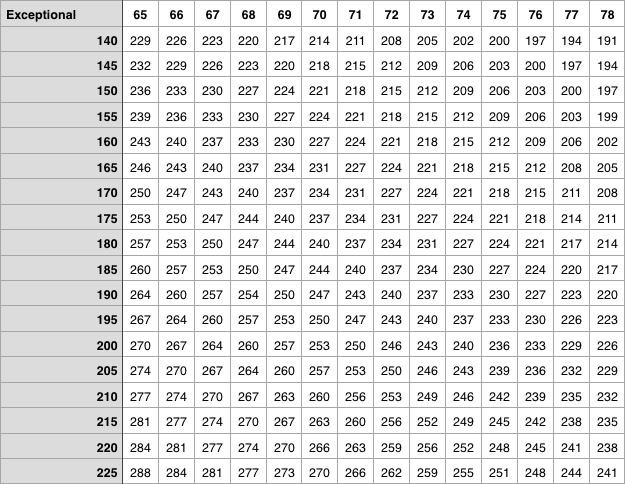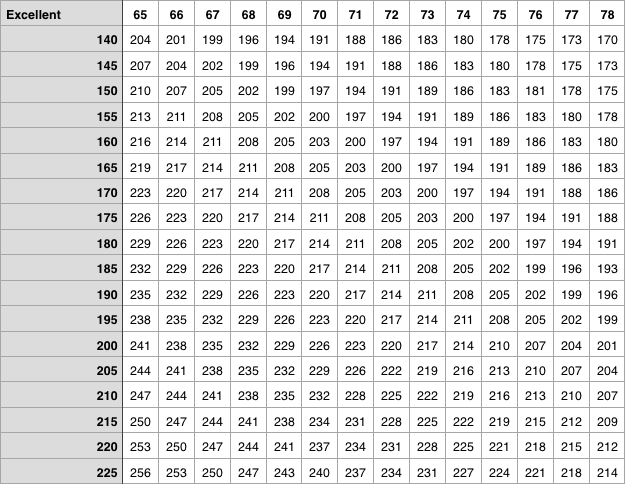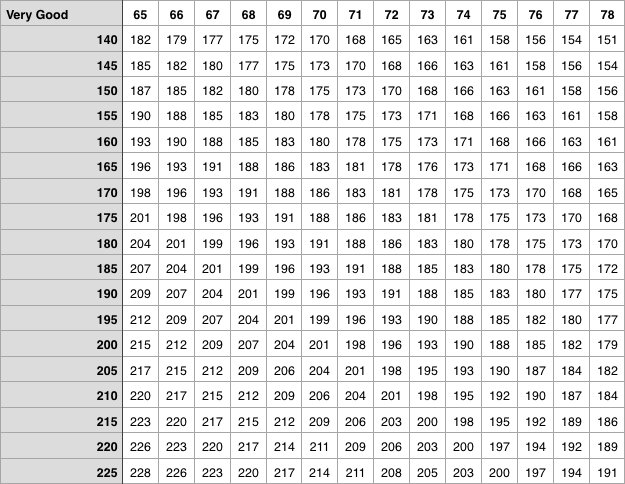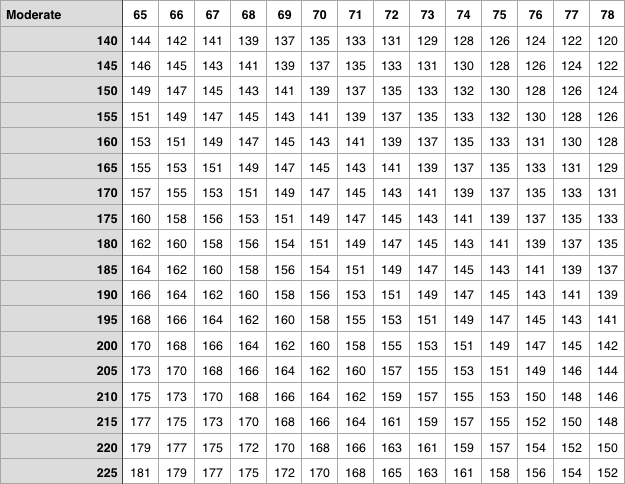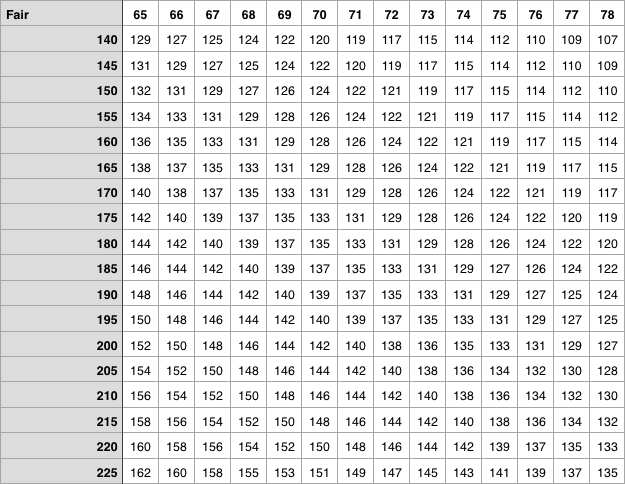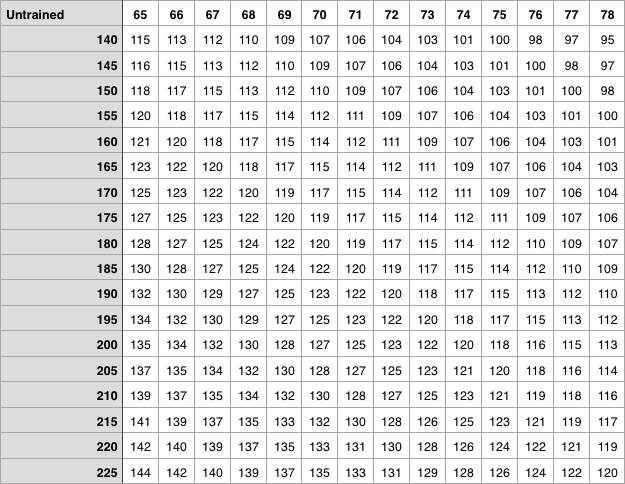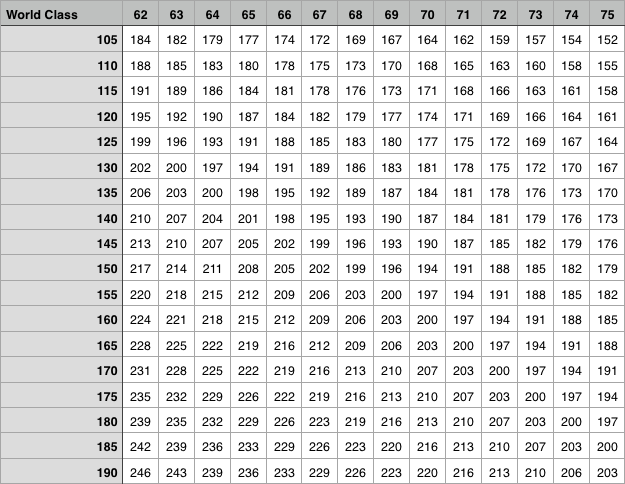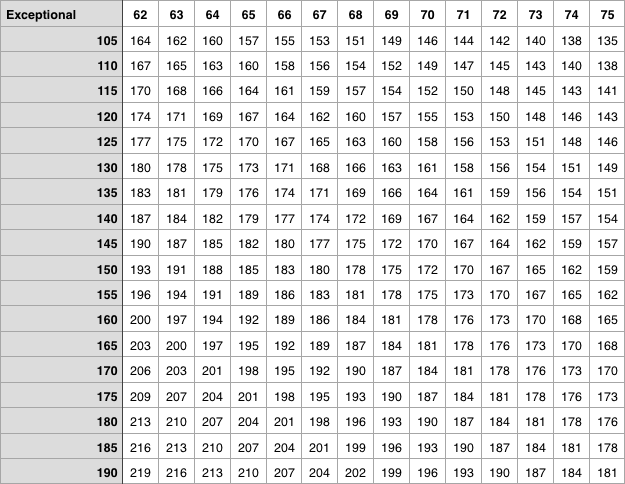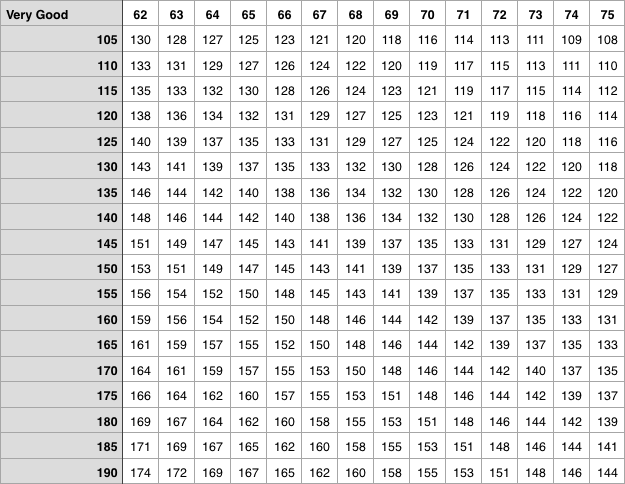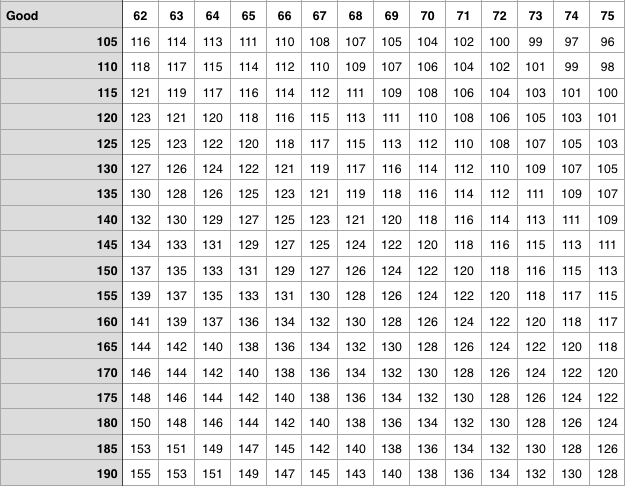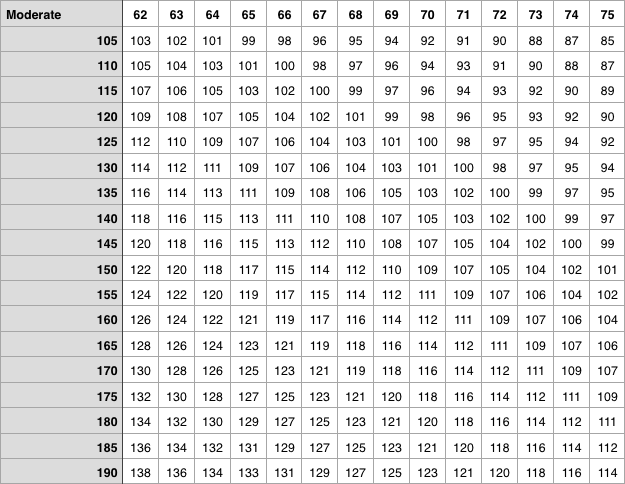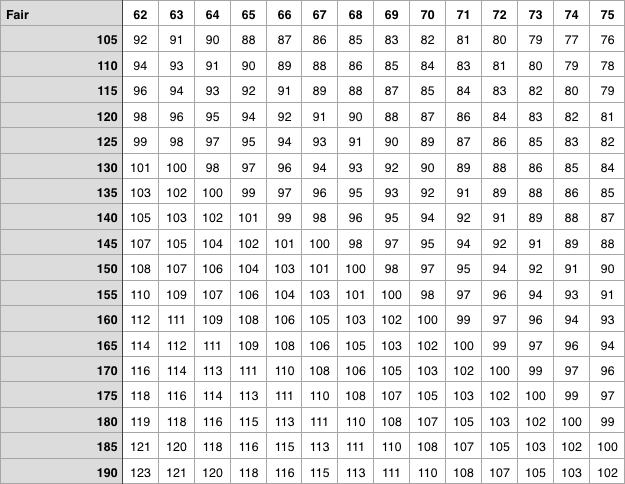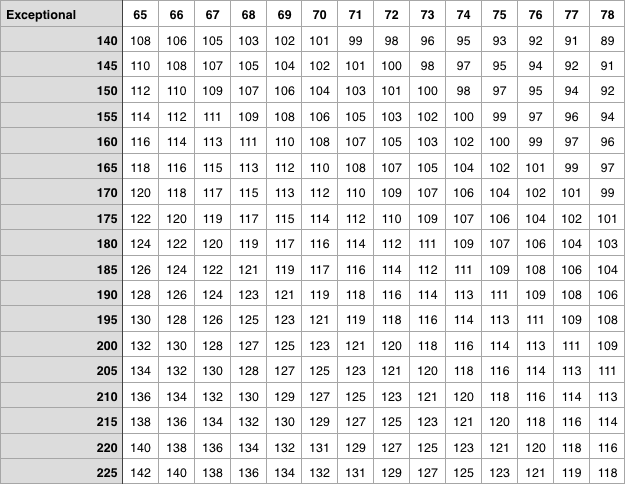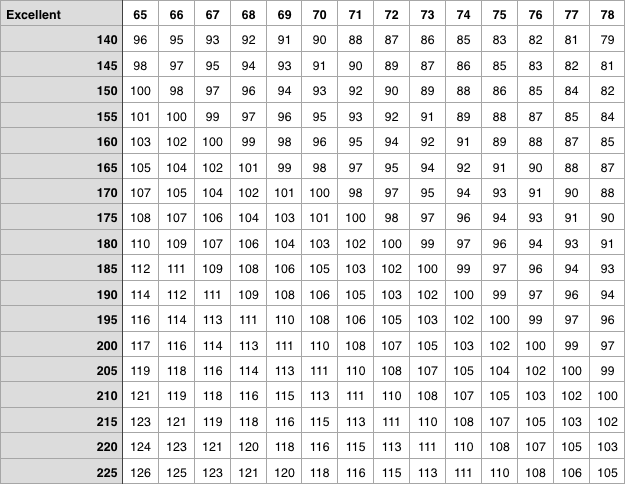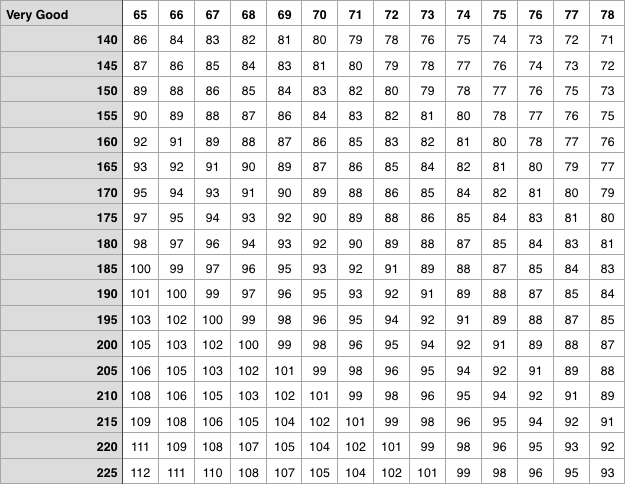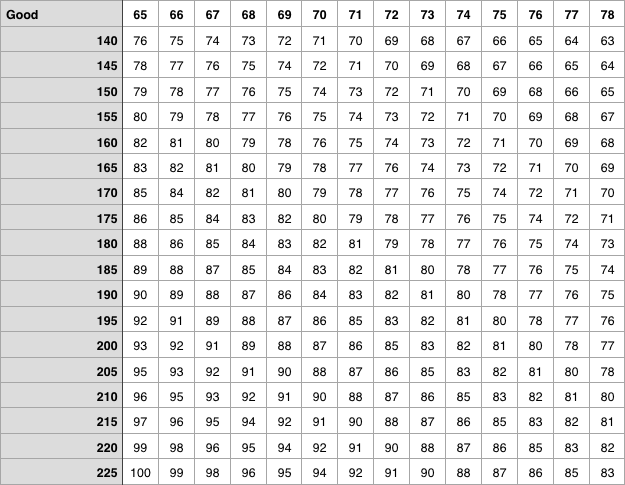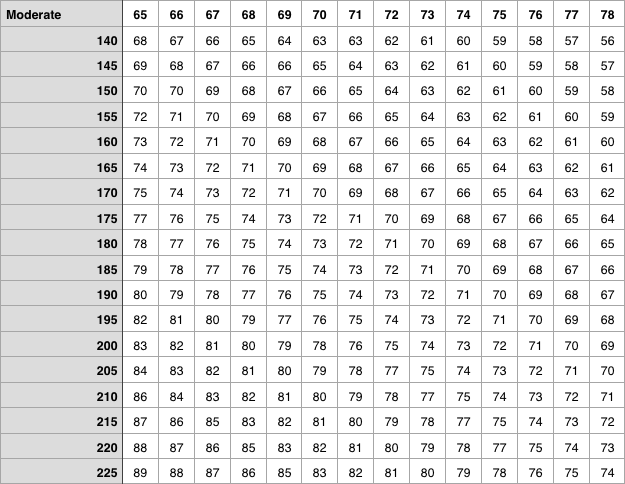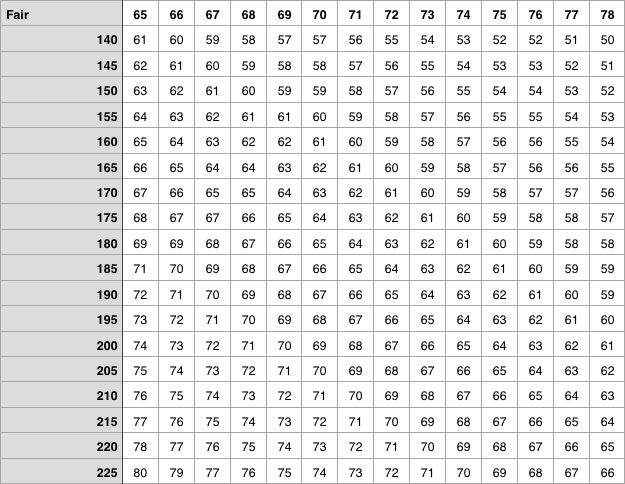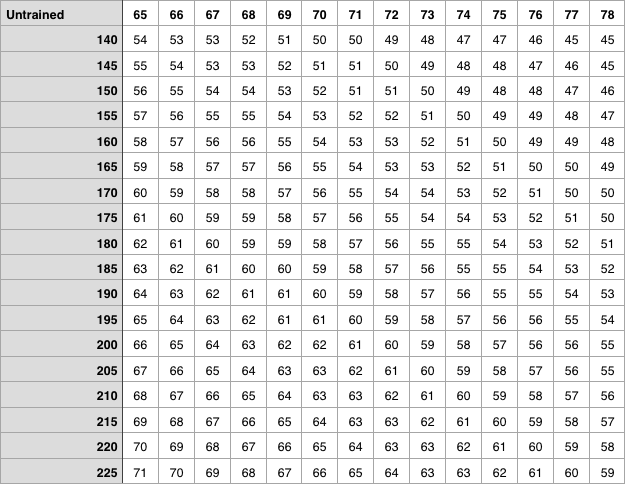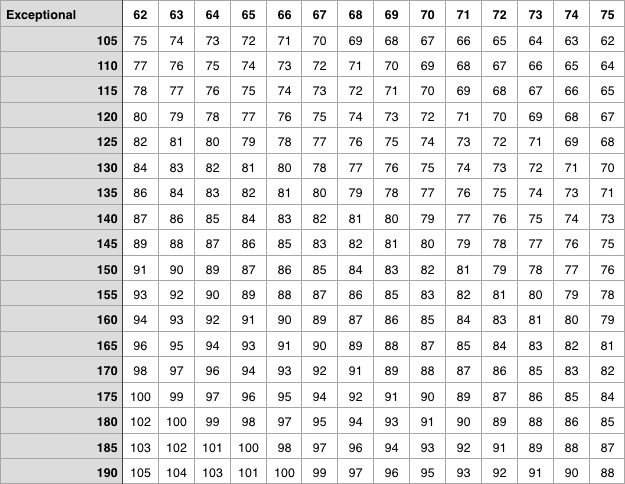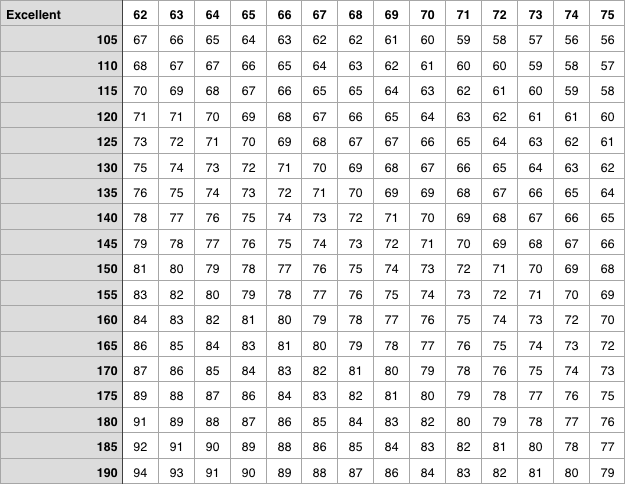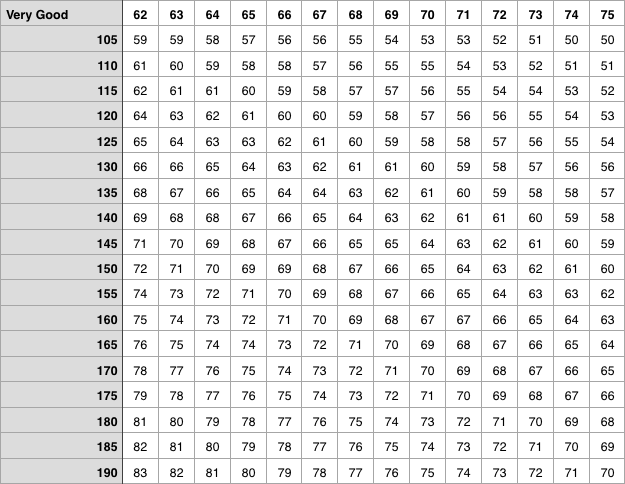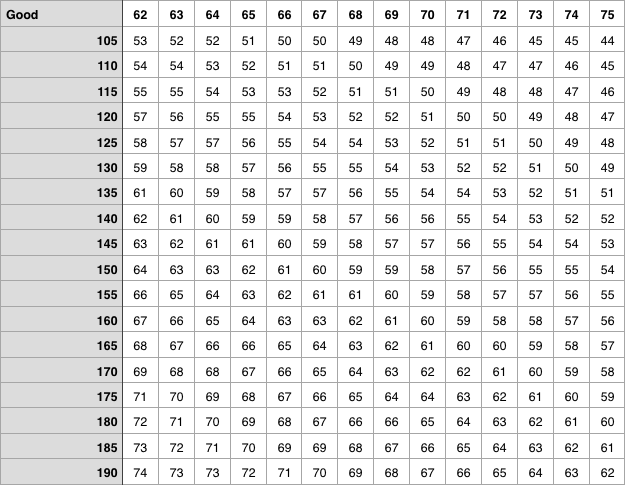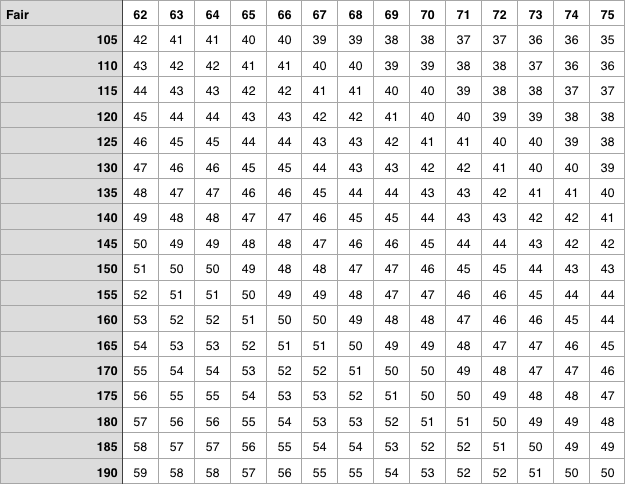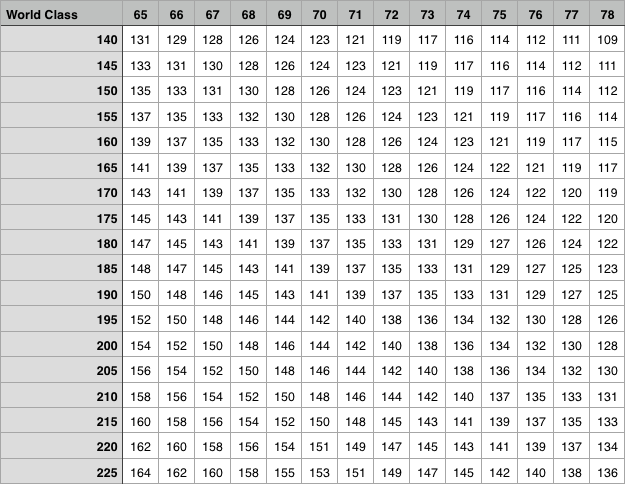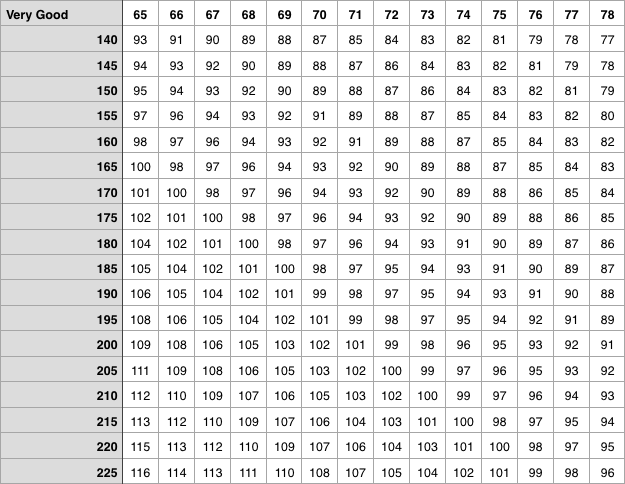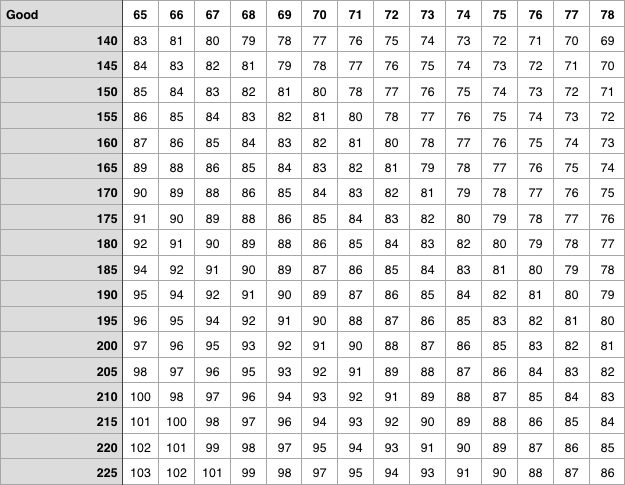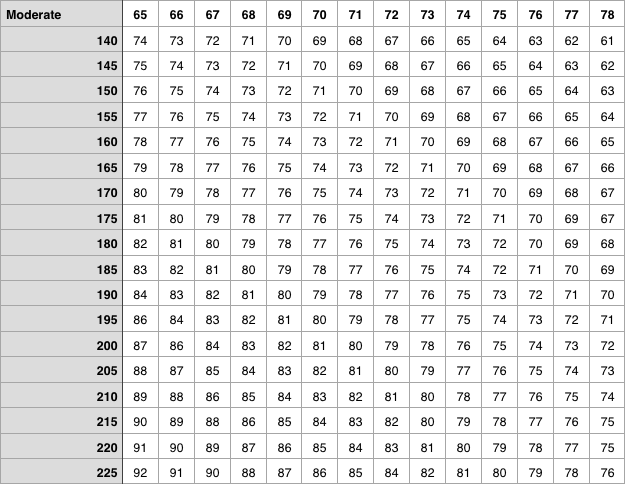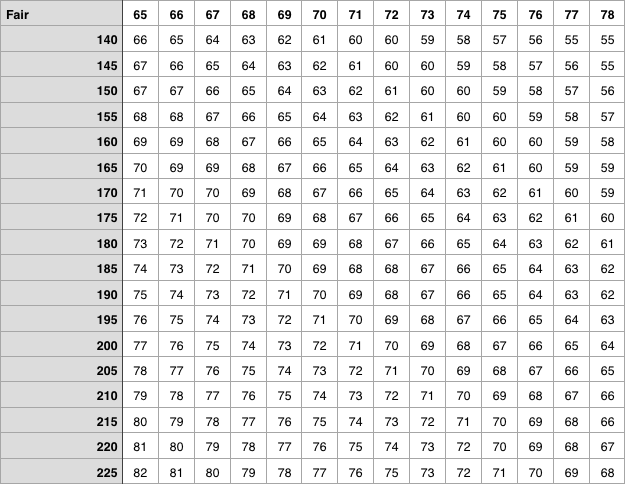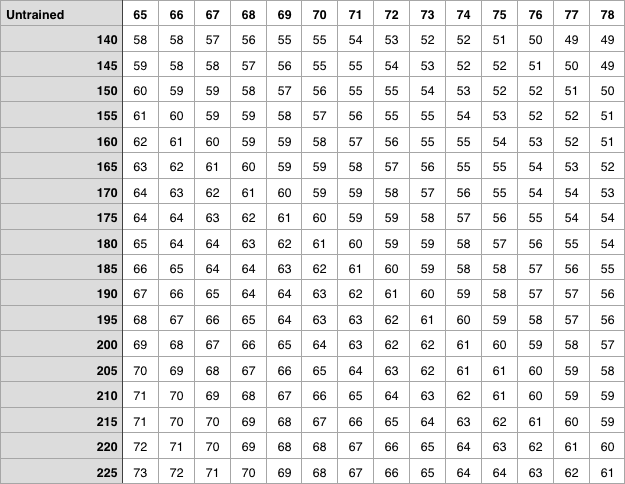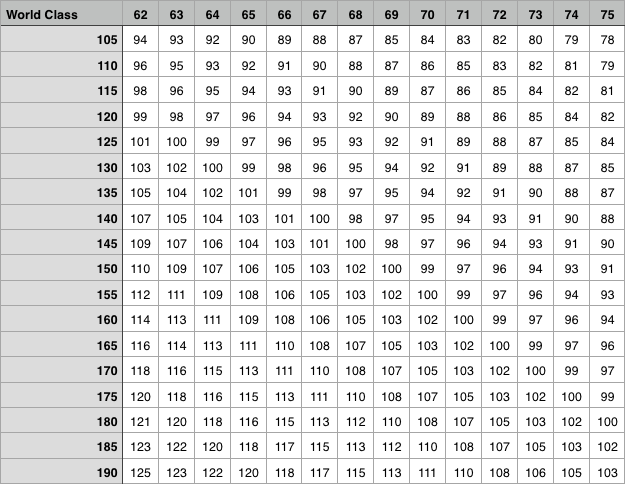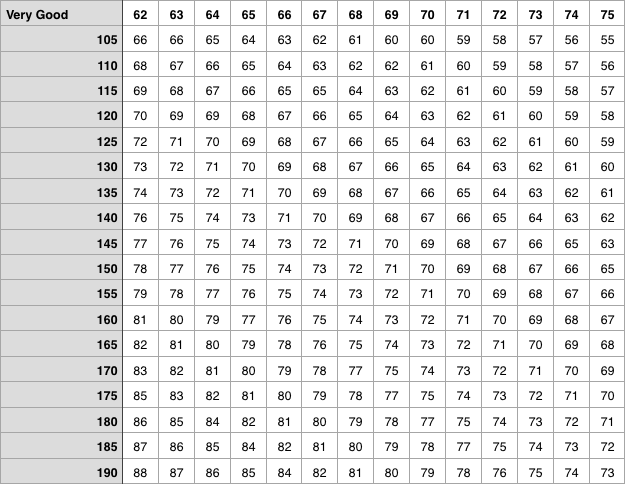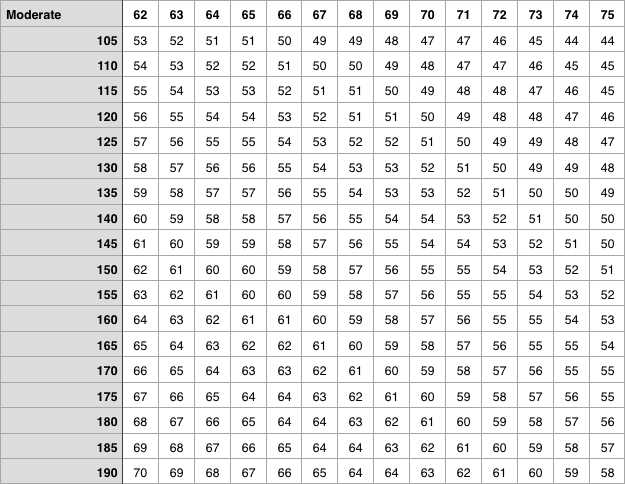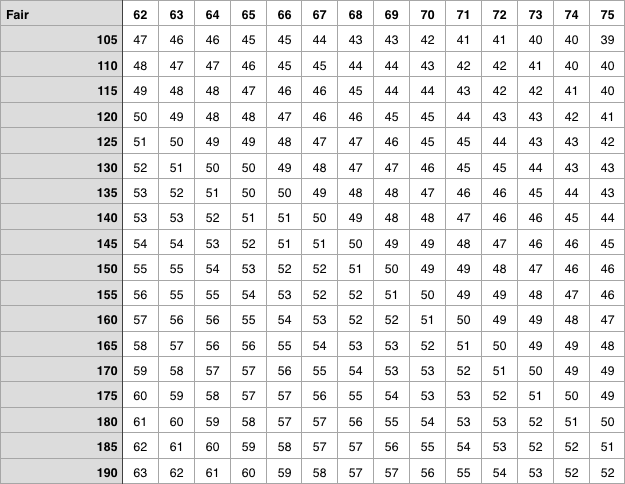This article was first published in October 2015.
By Adam Scott, MS, CSCS
A Quick Review
For the last two months, we have been busy trying to develop a work capacity standard for operators. To do this we turned first to mechanical power outputs – specifically wattage production during various physical activities (Article #1). This led to an exploration of power-dependent sports like cycling and rowing, and ultimately a comparison to CrossFit’s multimodal WODs (Article #2).
After this, we reached out to our athletes through an online survey and gathered inputs on durations, loads, and movements. These inputs were vital in helping us identify components for the standard.
Finally, as you can see below, we took the research and the athlete input and combined them to create our power-based Work Capacity Standards for Operators. The standards presented below allow for operators to test their Work Capacity fitness through an almost unlimited number of modes. While we have only addressed a few, the options are nearly endless (as longs as you can calculate power outputs).
Developing Our Standard
Time Component:
7 minutes
We received 169 survey responses. 86 were from military athletes (nearly half the total). We also had 62 responses from LE Athletes and 19 responses from athletes who fell into the “other” category.
The most identified duration in our survey was 6-10 minutes (39 responses) and 71% of respondents selected times between 1 and 15 minutes. Based on this we settled on a 7 minute time standard.
Work Capacity Survey – Time Standard Responses

Males = 3.99 watts/kg (World Class Multimodal Output)
Females = 3.17 watts/kg (World Class Multimodal Output)
Our research into indoor rowing, cycling and Crossfit allowed us to estimate world class power to weight ratios for multimodal events. These standards, which are based on athletes’ power to weight ratios allow for scaled standards based on an individual’s height and weight.
The table below shows how this relative standard can be applied to males and females of various weights to reveal absolute power production requirements.
TABLE 1: 7 Minute Absolute Power Output by Category
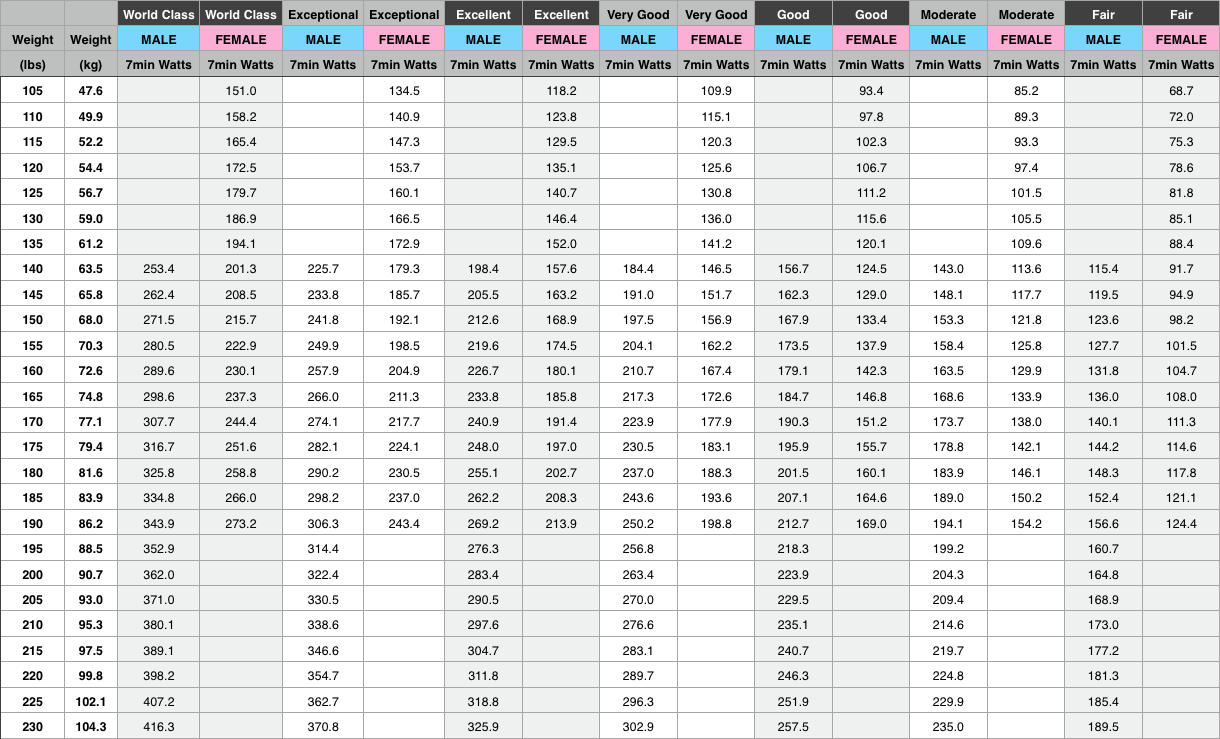
Pending…but experimenting with 45-65lb for weighted events
The results from our survey showed that the average load for a tactical work capacity event was fairly evenly split between 21-30lbs (43 responses), 31-40lbs (43 responses) and 41-50lbs (42 responses). There were also 32 respondents who selected a load of >50lbs.
Based on this we have started working with loads of 45lbs and 65lbs. The tables below show how these loads relate to reps for each movement.
Work Capacity Survey – Load Responses
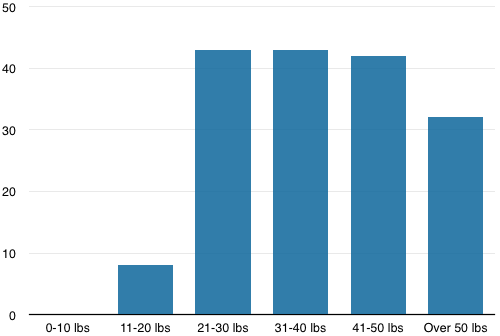
Weighted sprints were the most selected movement in the survey (129 responses). They were followed by sandbag, body weight, and finally dumbbell, kettlebell and barbell movements.
We are a little limited by our calculations at this time, but we were able to compute a few tables based on common weight room movements. These tables, listed below, show the number of repetitions which must be completed in the 7 minute time limit for each movement.
The movements we have calculated standards for are: Thrusters, Clean & Presses and Snatches.
Work Capacity Survey – Movement Responses
We were also able to calculate a Work Capacity standard for repeated sprints. This standard was based on the calculated World Class Operator Power Standard and then scaled back in distance and time for the lower standards.
To calculate our original standard we took the average 7 minute power output and divided it into 10 second intervals. This left us with 42 sprint distances (10 seconds x 42 reps = 420 seconds, 7 minutes). This calculation revealed a required distance of 63.1m to meet the World Class Operator Standard. This would equate to approximately 1.64 miles in 7 minutes (about 4:14 per mile in shuttle sprints)…i.e. definitely World Class. For us mere mortals we established the following realistic sprint intervals:
TABLE 2: Work Capacity Sprint Standards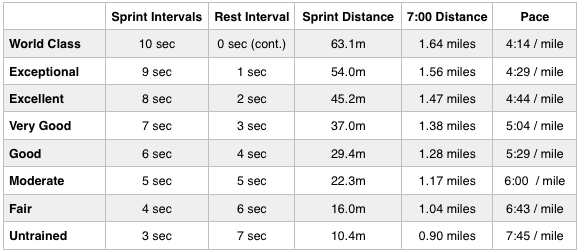
Thus, to score in the “Good” category an athlete would need to complete 42 Rounds (7 minutes) of 29.4m shuttles. The athlete must complete each shuttle in under 6 seconds, then rest for 4 seconds and repeat the sprint. Trust me, its harder than it sounds.
Let’s look at the following example: For a male athlete (height = 69 inches, weight = 170lbs) to be considered “World Class” they must produce power at the Work Capacity Standard of 3.99 watts/kg.
This equates to an average of 307.7 watts for 7 minutes. To reach the “Exceptional” level this would require 274.1 watts. To reach the “Excellent” level this equates to 240.9 watts…and so on (reading from TABLE 1)
Don’t worry, we have already calculated everything for you. All you need to do is locate the chart for the standard you are interested in (at the conclusion of this article). Then look-up your height in the first row and weight in the first column. Located where your height (column) and weight (row) intersect on the table and find the reps you need to complete in order to make that standard.
EXAMPLE: How to Read the Work Capacity Standard Tables

Thus, for this athlete’s height (69 inches) and weight (170lbs) the Work Capacity standards are as follows:
TABLE 3: Work Capacity Standards for Male, 69 inches, 170 lbs

What’s next
(1) We have come a long way in developing this theory. However, we still need to test the numbers to see if they hold up. We are hoping to do some of this during our next Operator and LE cycles.
(2) We need to simplify the process. Ideally, we would find a way to create an online calculator in which athletes can entire their information and automatically receive their standards.
(3) We need to expand the exercise and movement options to allow for more variety in the standards.
(4) We need to develop a few standard multimodal events which combine multiple movements. This would perhaps be the best test of Work Capacity as it would require athletes to transition between modes and address multiple functional needs.
References:
- Carmelo Bosco PL, and Paavo V. Komi. A Simple Method for Measurement of Mechanical Power in Jumping. European Journal of Applied Physiology and Occupational Physiology 50: 273-282, 1983.
- http://home.trainingpeaks.com/blog/article/power-profiling. Accessed 13 August, 2015.
- Karduna AR. Introduction to Biomechanical Analysis, in: Biomechanical Principles. p 20.
- Keytel LR, Goedecke, J.H., Noakes, T.D., Hiiloskorpi, H., Laukkanen, R., van de Merwe, L., Lmabert, E.V. Predictions of energy expenditure from heart rate monitoring during submaximal exercise. Journal of Sports Science, 2005.
- Knudson DV. Correcting the use of the term “power” in the strength and conditioning literature. Journal of Strength and Conditioning Research 23: 1902-1908, 2009.
- Lakomy HKA. Laboratory measurement of human power output during maximum intensity exercise. Physical Education 28, 1993.
- Steiler S. Physiology of an Elite Rower. 1996.
- Houglum, P.A., Dolores, B.B. Brunnstrom’s Clinical Kinesiology. F.A. Davis Company. Philadelphia, PA. 2012
- Hughes, John. “Training for Economy.” http://www.ultracycling.com/training/economy.html. Accessed: September 18, 2010.
- (“What’s a good Grace (CrossFit) time?” http://www.cebul.la/whats-a-good-grace-crossfit-time/. Accessed: September 22, 2015.
- Power Calculator Websites:
http://www.catalystathletics.com/resources/power-output
http://www.concept2.com/indoor-rowers/training/calculators/watts-calculator
http://www.topendsports.com/testing/running-power.htm
Work Capacity Standard Tables:

